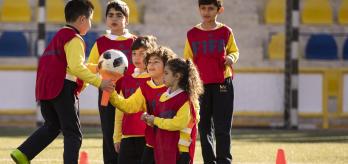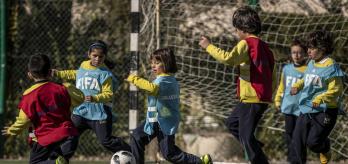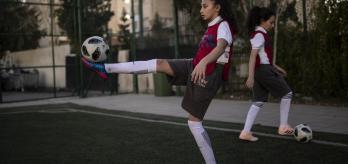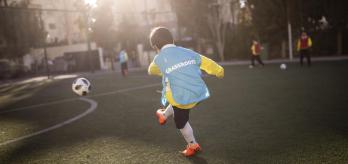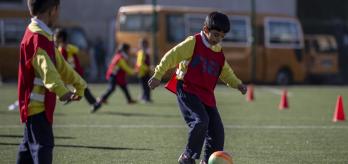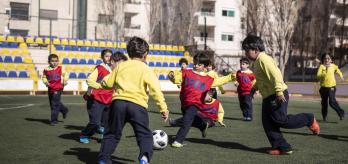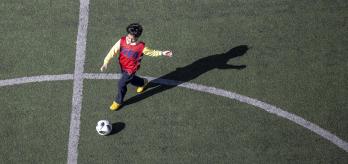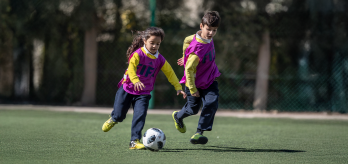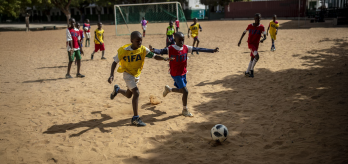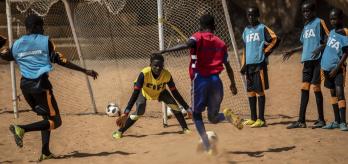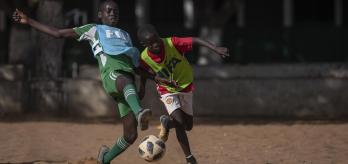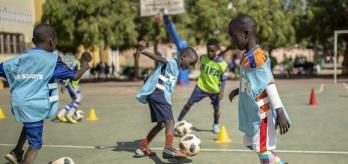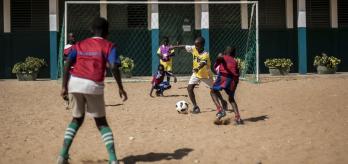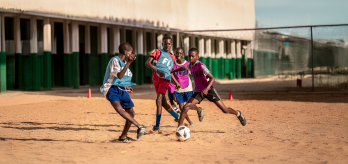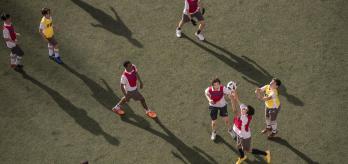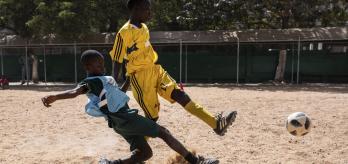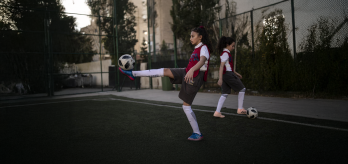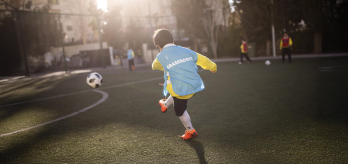In this edition of FIFA’s Grassroots Coaching Essentials series, Stanley Gardiner explores the Global-Analytical-Global (GAG) model – a three-phase session framework that will help coaches make practice fun and engaging, while still ensuring that players are developing core technical skills. The GAG method begins and ends with game-like activities, with an analytical phase in between focusing on unopposed skill repetition.
Below, you will find a video presentation in which Stanley breaks down each phase of the GAG model and demonstrates how coaches can apply it to practice for players aged 8 to 12 – a formative period for building technical proficiency, game understanding and a love for football. Each phase is followed by a written summary and practical examples that coaches can incorporate into their own training sessions.
Phase 1: Global
To maximise learning using the GAG model, coaches should begin every session with an activity that simulates match-like situations, setting the tone for the remainder of practice. In this section, Stanley highlights the benefits of beginning with a global activity along with practical ways to apply this approach effectively:
-
Create a fun environment: The first global activity aims to ensure that players are having fun in a realistic game setting right from the start, helping to create a positive and engaging start to the session.
-
Identify skills to be practised: Game-like activities are a great way for coaches to observe which technical areas need further development in the second part of the session.
-
Build confidence on the ball: Coaches should design each global activity to provide players with plenty of touches, which will build their confidence on the ball for the remainder of practice.
Phase 2: Analytical
Having set a fun, engaging tone in the first activity, the analytical phase of the GAG model allows coaches to work on the skills that were identified in the previous activity through unopposed practice. Here, Stanley explains the benefits of analytical activities and how to avoid the monotony of repetition to ensure that players are getting the most out of this part of the session:
-
Plenty of repetition for players: Select one primary technical focus for the analytical phase to allow players to have repeated practice and quicker improvement, while keeping the activity engaging for players.
-
Quality before speed: Always emphasise accuracy over speed by encouraging players to use good technique when executing actions on the ball.
-
Competition can be added: Coaches can still incorporate competition into unopposed activities to keep players mentally engaged with the learning process and maintain a positive atmosphere during the session.
Phase 3: Global
The final phase provides players with an opportunity to test out the skills that they have practised once more in a game-like setting. It not only reinforces the technical learning of the analytical phase but also allows coaches to assess the progress of their players in a fun and competitive setting. In this section, Stanley discusses how to close out the session using the GAG method to consolidate learning:
-
Reintroduce game-like situations: Small-sided games are an excellent way to ensure that players have fun when closing out a session as they closely resemble scenarios from a real match.
-
Check for skill development: The final global activity allows coaches to observe whether players have progressed the key skills introduced in the previous phase.
-
Incorporate tactical principles: Coaches can begin implementing basic tactical concepts into these activities, as players will already have a foundation from their previous game experience.
Key Take-aways
Based on the key insights shared by Stanley in this presentation, coaches should now feel more confident in their knowledge of the GAG model of designing training sessions and their ability to apply it effectively during practice. Here is a summary of the main take-aways from this presentation:
-
Strikes a balance between learning and fun: By keeping the main session theme central to each activity, coaches can ensure that each exercise is meaningful and relevant.
-
Creates a fluid session design: It boosts players’ motivation and encourages effort while they develop their core technical skills and have fun.
-
Plenty of real-game situations: This helps players connect technique with decision-making, enhancing their ability to read the game and make smart plays. It also increases the possibility of players applying the learned skills in real games.


